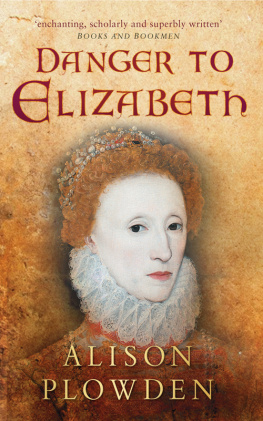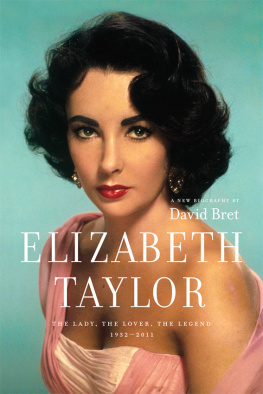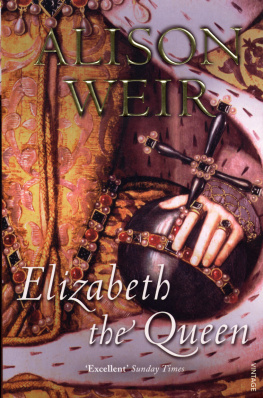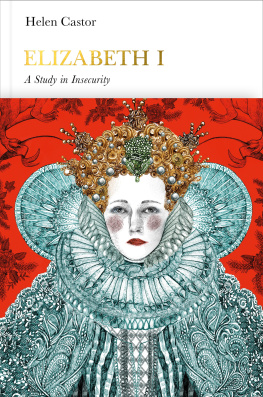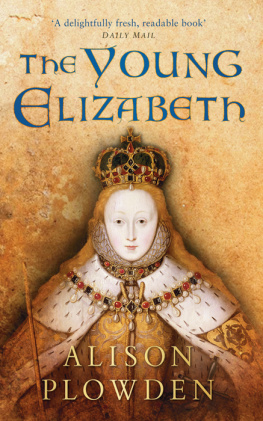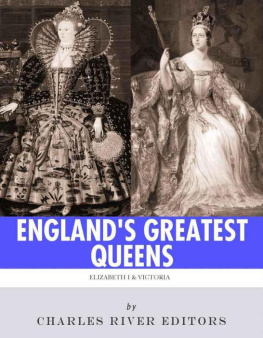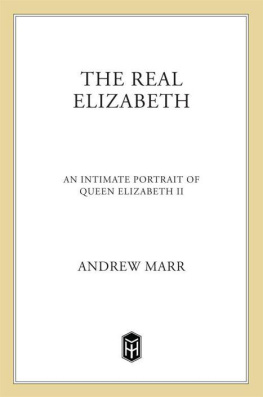Routledge Revivals
ENGLANDS ELIZABETH
by Thomas Heywood
ENGLANDS ELIZABETH
by Thomas Heywood
edited by
Philip R. Rider
First published in 1982 by Garland Publishing, Inc.
This edition first published in 2018 by Routledge
2 Park Square, Milton Park, Abingdon, Oxon, OX14 4RN
and by Routledge
52 Vanderbilt Avenue, New York, NY 10017, USA
Routledge is an imprint of the Taylor & Francis Group, an informa business
1982 by Philip R. Rider
All rights reserved. No part of this book may be reprinted or reproduced or utilised in any form or by any electronic, mechanical, or other means, now known or hereafter invented, including photocopying and recording, or in any information storage or retrieval system, without permission in writing from the publishers.
Publishers Note
The publisher has gone to great lengths to ensure the quality of this reprint but points out that some imperfections in the original copies may be apparent.
Disclaimer
The publisher has made every effort to trace copyright holders and welcomes correspondence from those they have been unable to contact.
A Library of Congress record exists under ISBN:
ISBN 13: 978-0-367-17999-1 (hbk)
ISBN 13: 978-0-429-05897-4 (ebk)
Garland English Texts
Stephen Orgel
Editor
Jerome McGann
Associate Editor
ENGLANDS ELIZABETH
by Thomas Heywood
edited by
Philip R. Rider
Garland English Texts
Number 8
Copyright 1982 by Philip R. Rider
All rights reserved
Library of Congress Cataloging in Publication Data
Heywood, Thomas, d. 1641.
Englands Elizabeth.
(Garland English texts ; no. 8)
Includes bibliographical references.
1. Elizabeth I, Queen of England, 15331603.
2. Great BritainHistoryElizabeth, 15581603.
3. Great BritainKings and rulersBiography.
I. Rider, Philip R., 1941II. Title.
III. Series.
DA356.H621982942.0550924 [B]80-9004
ISBN 0-8240-9402-6AACR2
Printed on acid-free, 250-year-life paper
Manufactured in the United States of America
CONTENTS
It is with more pleasure than obligation that I acknowledge here the help afforded me by Professor William P Williams. In addition to his careful reading of and thoughtful comments about the present work, Professor Williams has, through active encouragement and through the example of sound scholarship, been more responsible for whatever is of value in this work than he is aware.
Three other faculty members of Northern Illinois University deserve special thanks. Professors Craig Abbott and Edward Herbert devoted much time to a careful reading of my work at various stages, and their questions and suggestions helped me to avoid any number of pitfalls, large and small. Professor Philip Dust graciously checked (and almost invariably had to correct) my Latin translations.
A number of persons at other institutions also gave generously of their time. Miss Katharine Pantzer of the Houghton Library, Harvard University, provided me with information about several items in the revised STC. The following persons checked variant readings in copies of the 1631 edition of Englands Elizabeth for me; many of them sent detailed notes on the readings, a few sent photocopies, and all of them devoted no little effort to answering a strangers questions: Dr. Margaret M. Wright (John Rylands Library, University of Manchester); Mr. Thomas V Lange (Pierpont Morgan Library); Miss Christina M. Hanson (Beinecke Rare Book and Manuscript Library, Yale University); Mr. Wayne G. Hammond (Chapin Library, Williams College); L. W Riley (Van Pelt Library, University of Pennsylvania); Dr. Nati H. Krivatsy (Folger Shakespeare Library); Mr. William Matheson (Rare Book and Special Collections Divison, Library of Congress); Oswalda Deva (Department of Special Collections, Stanford University Libraries); and Ms. Diane Haack (who checked the Huntington Library copy). A few other librarians also deserve mention, specifically the staff of the Rare Book Room of the Newberry Library, and the Inter-Library Loan departments of Northern Illinois University and the University of Illinois at Chicago Circle.
Finally, a special word of gratitude goes to Professor Stephen Orgel of Johns Hopkins University who first suggested this work for publication.
By the time Englands Elizabeth was published in 1631, Thomas Heywood had already been a professional writer for approximately thirty-seven years.1 The first work which can definitely be ascribed to him is The First and Second partes of King Edward the Fourth , published in 1599. He was certainly writing before this date, however, because in 1598 Francis Meres included him in a list of writers described as the best for Comedy,2 and on 14 October 1596 Henslowe recorded a loan to four actors for the purchase of hawodes bocke.3 His earliest work may be the poem Oenone and Paris (1594), ascribed on the title-page to T. H. and unknown until it was sold at Sothebys in 1925, which has been accepted as Heywoods by most modern scholars.4 By 1631 he had published several poems, including the enormous Troia Brittanica (1609), and had either written or collaborated upon a number of playsin 1633 he would claim to have had either an entire hand, or at the least a maine finger in two hundred and twenty plays.5 He also had published translations of Ovids de Arte Amandi and of Sallust. His only prose work before Englands Elizabeth was An Apology for Actors (1612).
Except for A Woman Killed With Kindness , a small handful of other plays, and An Apology for Actors , Heywood is no longer read. Most of the prose, the non-dramatic poetry, and the translations have not been edited, and some of the pieces have not even been reprinted since their first appearance in the seventeenth century. Chang and Hammersmith, commenting on the general state of Heywood criticism, say that his acknowledged high-quality works are frequently stressed at the expense of a large body of lesser material which receives mention only in biographical or historical treatments. Such unbalanced critical attention often results in a distorted picture of Heywoods literary accomplishments. it is unquestionably just that the bulk of critical attention be directed to the playsthey are generally of a higher literary quality than are the prose and poetry. But Heywood obviously felt that these other works were important too, and probably for more than just the income they might bring him. Englands Elizabeth deserves more notice than it has received, in part because it constitutes one small portion of the canon of a writer of some importance, but also because it has some merit of its own.
Heywood makes no claim to being a historian, despite the number of historical plays and popular histories he wrote. He seems instead to have viewed himself as a popularizer, though without the pejorative connotations which the modern reader associates with that term. In his address to the reader in The Life of Merlin (Wing H1786; 1641)a popular history of BritainHeywood explains exactly what he is trying to do. He is going to provide the reader with



